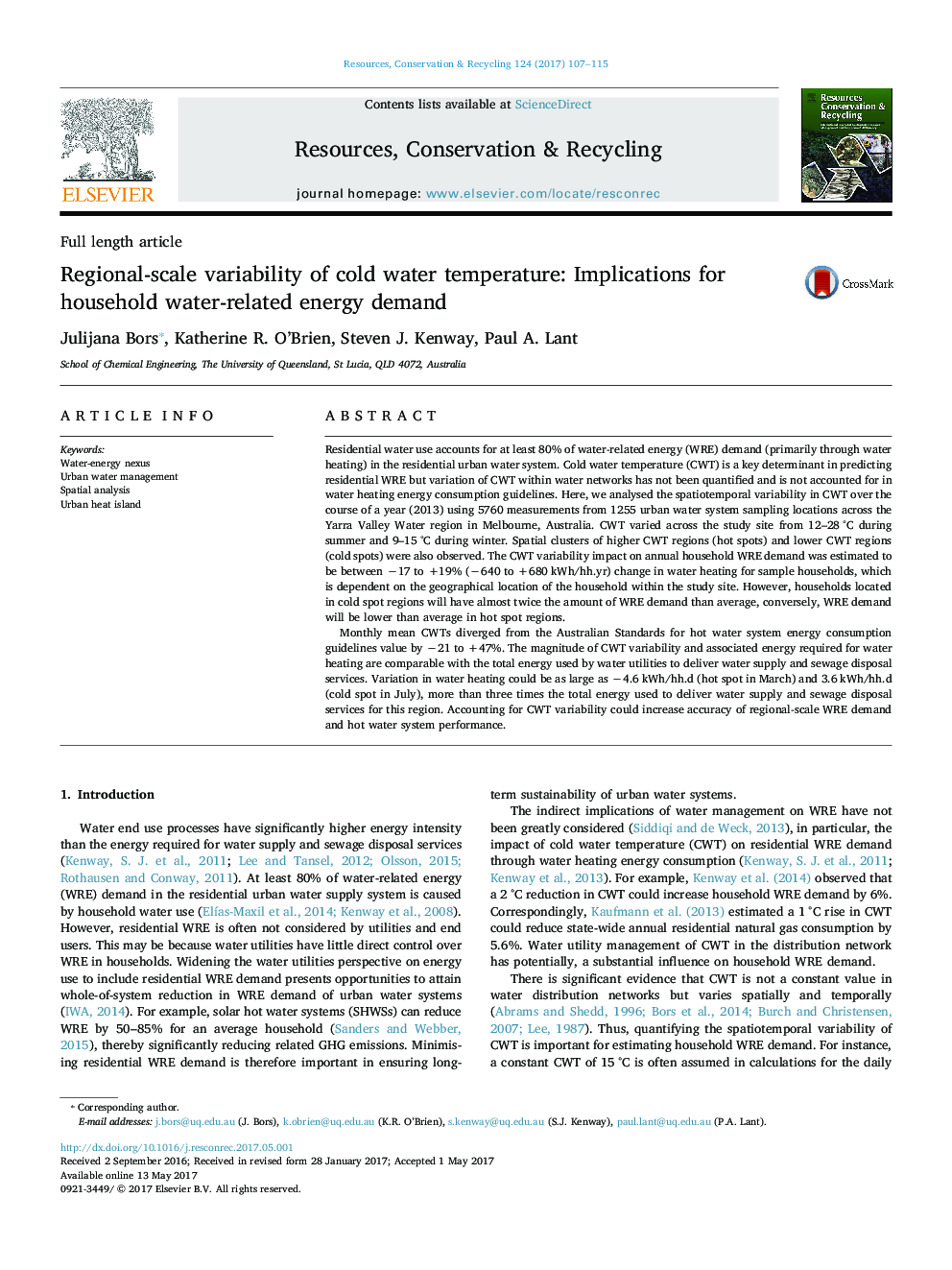| کد مقاله | کد نشریه | سال انتشار | مقاله انگلیسی | نسخه تمام متن |
|---|---|---|---|---|
| 5118730 | 1485668 | 2017 | 9 صفحه PDF | دانلود رایگان |
- Innovatively mapped cold water temperature variation across 1255 sampling locations.
- First spatial analysis of water temperature variation and related energy influence.
- Variability was highest during summer 12-28 °C, and lowest during winter 9-15 °C.
- Estimated variability impact on water heating was â640 to +680Â kWh/hh.yr.
- Proposes water temperature management as a new energy efficiency opportunity.
Residential water use accounts for at least 80% of water-related energy (WRE) demand (primarily through water heating) in the residential urban water system. Cold water temperature (CWT) is a key determinant in predicting residential WRE but variation of CWT within water networks has not been quantified and is not accounted for in water heating energy consumption guidelines. Here, we analysed the spatiotemporal variability in CWT over the course of a year (2013) using 5760 measurements from 1255 urban water system sampling locations across the Yarra Valley Water region in Melbourne, Australia. CWT varied across the study site from 12-28 °C during summer and 9-15 °C during winter. Spatial clusters of higher CWT regions (hot spots) and lower CWT regions (cold spots) were also observed. The CWT variability impact on annual household WRE demand was estimated to be between â17 to +19% (â640 to +680 kWh/hh.yr) change in water heating for sample households, which is dependent on the geographical location of the household within the study site. However, households located in cold spot regions will have almost twice the amount of WRE demand than average, conversely, WRE demand will be lower than average in hot spot regions.Monthly mean CWTs diverged from the Australian Standards for hot water system energy consumption guidelines value by â21 to +47%. The magnitude of CWT variability and associated energy required for water heating are comparable with the total energy used by water utilities to deliver water supply and sewage disposal services. Variation in water heating could be as large as â4.6 kWh/hh.d (hot spot in March) and 3.6 kWh/hh.d (cold spot in July), more than three times the total energy used to deliver water supply and sewage disposal services for this region. Accounting for CWT variability could increase accuracy of regional-scale WRE demand and hot water system performance.
Journal: Resources, Conservation and Recycling - Volume 124, September 2017, Pages 107-115
